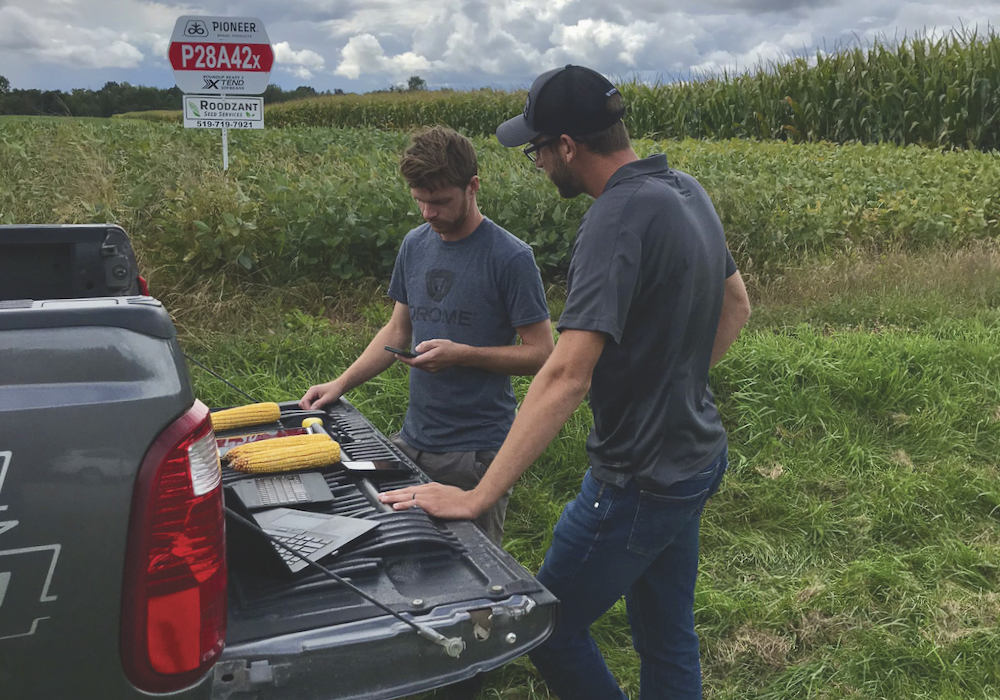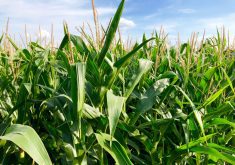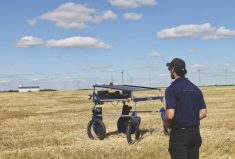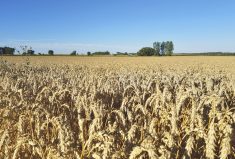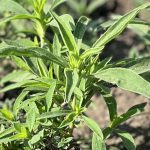There’s yet another option in the growing list of options for precision farming software. Introduced in 2019, Corteva’s Granular Insights is billed as a platform to help growers scout their fields and find in-season problems faster. It has expanded since and can now upload planting and harvest data, use satellite and aerial imagery and provide easily understandable feedback. As of late 2021, roughly 2,000 growers in Eastern Canada were signed on to use Granular Insights free of charge. There is also a Granular Agronomy version available for a fee.
Krista Klompstra, digital business leader for Corteva Agriscience Canada, says the technology is designed as a “centralized hub” where farmers can visualize and analyze their data to make better-informed decisions. It can implement data as far back as 2016, streamlining and co-ordinating details that have been kept separate or “siloed” for years. The Granular technology takes planting and yield figures and stitches them together quickly and easily without spreadsheets or thumb drives.
Klompstra adds there’s more than yield data to create the information layers that Granular can provide. A grower can add revenue, and costs to optimize profitability, all in a matter of minutes. It’s adjustable according to land rent or current commodity prices.
Read Also
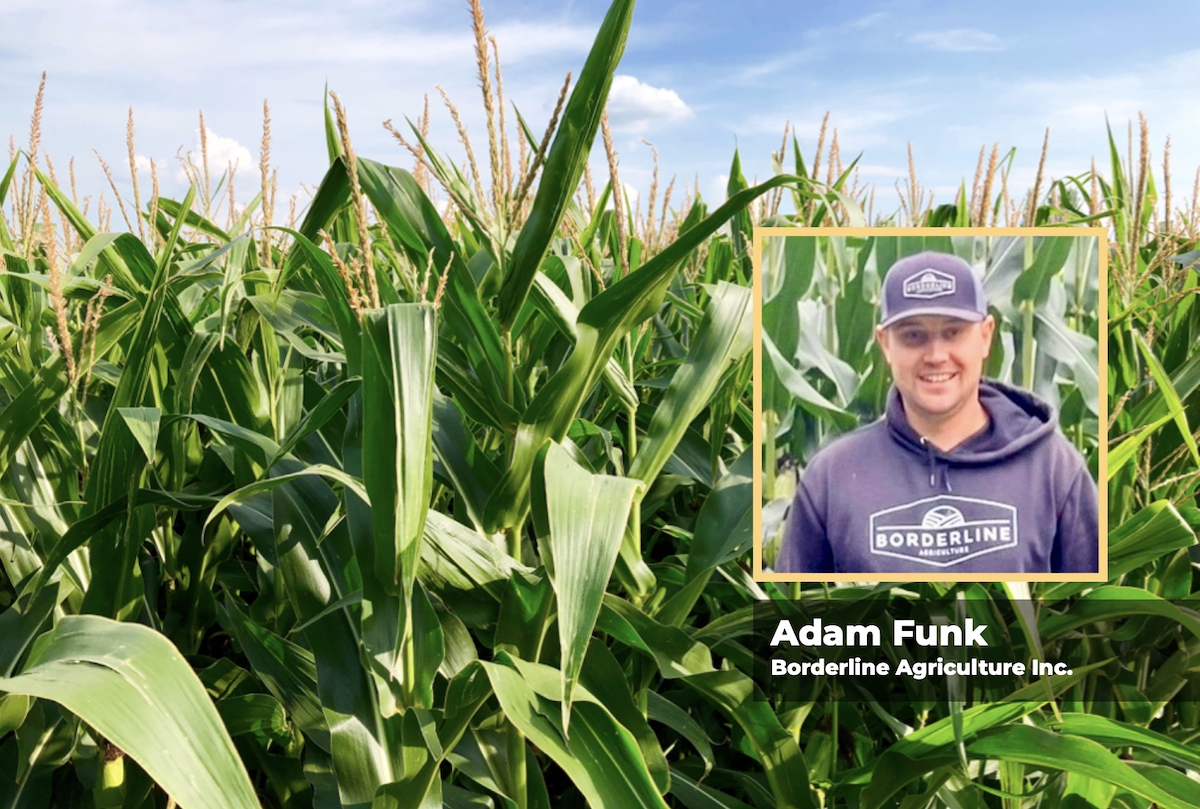
Agronomists share tips for evaluating new crop products and tech: Pt. 3
With new products, new production practices and new technology converging on the agriculture industry at a frenetic pace in recent…
“We’re able to really create that picture simply, and in a collaborative way, either with a seed rep or a support team member,” says Klompstra. “We’re not just shoving software at growers, which can be confusing. Or what if it doesn’t go right, and a grower asks, ‘Now what?’ and they give up?”
How it works
The Granular Insights system uses a plan, grow, analyze approach, co-ordinated with a trusted advisor. Using yield data from the previous year, a grower and advisor can add revenues and costs, and calculate some quick field-level profitability. Growers tend to know those parts of a field where they’re making money or losing money, and this system can provide added insights into those areas.
“What’s even better is now that you have the data, you can do field-by-field comparisons and product-by-product comparisons,” says Klompstra. “We’re able to draw other insights across the whole operation. For example, what was the effect of planting date on yield? Now that the data sit in one place, you have automated insights from that data and it really helps growers when it comes to planting season.”
- Read more: Precision ag needs and wants
In the planning stage, questions can be generated about the previous season. What did the data show? Have there been insect problems in one part of a field? Is a particular hybrid suited to another field?
It’s a matter of pulling those pieces together to plan field-by-field for the coming year.
Then there’s the growing stage, using satellite imagery. Klompstra equates it less as a matter of looking for what’s expected and more as looking for the unexpected. Perhaps it only confirms a grower’s understanding of a field, such as where there’s a knoll where yields tend to drop or a hollow where soil tilth is higher.
“But when you look across the field, what are you not expecting and what’s surprising you?” asks Klompstra. “We see things like a sprayer issue where a whole section was missed: you can see that with satellite imagery. Or fungicide versus non-fungicide on a field.”
The whole process repeats following the harvest. It’s a cycle of learning with non-stop, continuous data analysis to keep growing and optimizing every year.
From the ground up
It’s the opportunity to learn and grow that interests Gavin Galbraith, who grows corn and soybeans on 1,000 acres near McKay’s Corners, south of Thamesville. He says he doesn’t have every modern tool of the trade on his operation and that he’s probably behind larger-scale growers in terms of technologies. Galbraith says he incorporated the Granular Insights system on a limited-use basis in 2020.
“I primarily use the platform with my seed dealer to plan rotation and variety selection. I also monitor my weekly digital imagery scouting reports and find this to be helpful.”
Galbraith doesn’t have a yield monitor in his combine. Every truckload is graded and scaled during the harvest, so he hasn’t found the need to add a monitor just yet. Still, he manually inputs his yields into the Insights platform, which he concedes can be a challenge at times.
“I suspect that as I advance the use of technology on my farm, there’ll be many learning curves,” he says. “As I’m not using Granular to its full capacity yet, I can’t say it’s adding a lot of measurable impact at this point; however, I’ll continue to use the platform and as I incorporate more technology, I believe it could be very beneficial.”
Insights versus agronomy
Asked for a differentiation between the Granular’s Insights and Agronomy platforms, Klompstra says the former is a broader-based, broader-spectrum tool, adding there aren’t many growers who wouldn’t benefit from it. She estimates that Insights will appeal to 95 per cent of growers with Agronomy favoured by the other five per cent.
“Granular Agronomy is suited to those who are really interested in starting some variable-rate fertility work, as an example,” she says. “Those growers want the variable-rate prescriptions written for them because not everyone has the time to get into those details, do the soil sampling and write scripts, so that’s Granular Agronomy.”


